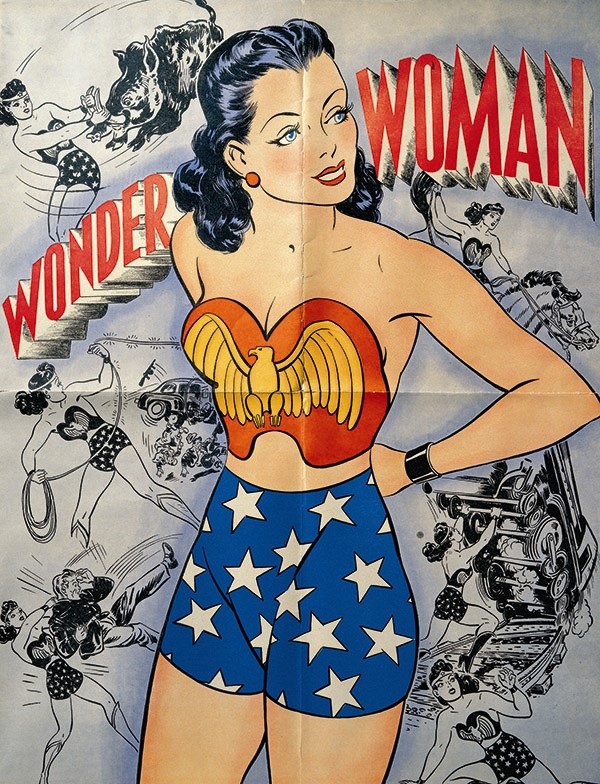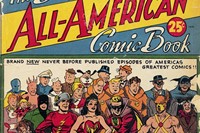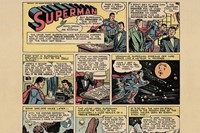“Every Golden Age is as much a matter of disregard as of felicity”, stated Michael Chabon. Now, a book written by Paul Levitz recounts the real history of comics and super heroes, and of the people who created them...
“Every Golden Age is as much a matter of disregard as of felicity”, stated American writer Michael Chabon in The Amazing Adventures of Kavalier & Clay. Published in 2000, his third novel gave a fictionalised account of the budding comic book industry in the early 40s through the lives of Jewish immigrants Josef Kavalier and Sam Clay. Now, Taschen has published The Golden Age of DC Comics where DC's longtime editor-in-chief Paul Levitz recounts the real history of comics and super heroes, and of the people who created them.
The year was 1938: hordes of young Jewish boys were escaping Hitler’s tide of terror and arriving to New York armed with nothing but their creativity. They went on to work in music, cinema, and as pulp and comic book illustrators and writers for the popular publishing house Detective Comics Inc, earning ten dollars a page. They were outsiders who wished, more than anything in the world, to blend in, to the point of changing their names (from Bob Kahn to Bob Kane, from Jacob Kurtzburg to Jack Kirby). Fear of what their families were still enduring in Europe and frustration towards American indifference urged them to dream of an almighty hero who would fight for justice. Superman came to light in June of that year and was described as “a physical marvel, a mental wonder destined to reshape the destiny of the World!” The first superhero was a sublimation of his authors’ desires: a sort of Moses coming from the planet Krypton rather than the Nile, he looked normal but was all-powerful. Bewildered by his raging success, DC commissioned the creation of another hero to artist Bob Kane. A childhood fan of Douglas Fairbanks and his Zorro adventures, Kane produced a masked character called the Bat-Man, whose family had been stricken by tragedy, prompting him to become Gotham City’s avenger. Flash, Hawkman and Starman followed. Quality and artistry were rapidly improving, to the point that Orson Welles drew inspiration from comic books to film some of Citizen Kane’s most daring angles. In the wake of Pearl Harbour’s attack, a new kind of superhero came to life: in December 1941, William Moulton Marston, a writer interested in mythology, gender roles and women’s social behaviour, fathered an Amazon who lived in a paradisiacal island populated only by females. Wonder Woman later became a feminist icon, but few know that Marston himself was an advocate of women’s rights. “He thought a woman would and should someday rule the country. He was writing feminist stories addressed to a masculine public”, editor Sheldon Mayer said of him.
"Superman was a sublimation of his authors’ desires: a sort of Moses coming from the planet Krypton rather than the Nile, he looked normal but was all-powerful"
World War II saw comic book sales peak, and soon superheroes got their own merchandise, radio shows and, eventually, TV shows. However, as peace returned to America and everyday battles went from survival to buying a suburban house or a new car, DC Comics and All-American Comics started their own lawsuit war. Simultaneously, readers’ interest in superheroes faded as Western-inspired comics became fashionable. Superman was the last remaining hero, existing exclusively on television next to an array of newly-created characters, eating Corn Flakes on behalf of the show’s sponsor, Kellogg’s. In 1953, as McCarthyism culminated, a moral commission declared that juvenile delinquency stemmed mostly from comic books: a witch-hunt was in order. As editors and authors were accused and judged of communist conspiracies and homosexuality, members of the American Legion organized mass book-burning sessions. At last decent society could rest assured, for the Golden Age of comic books had come to an end.
The Golden Age of DC Comics is out now, published by Taschen.
Text by Marta Represa
Marta Represa is a freelance writer specializing in fashion, art, photography and culture.



